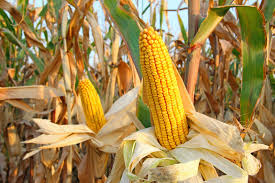The strength of the U.S. dollar has a direct impact on global grain prices, affecting farmers and traders alike. Since January 2024, the value of the U.S. dollar has increased significantly against multiple foreign currencies, influencing wheat, corn, and soybean prices in Oklahoma and Texas.
The Rising U.S. Dollar and Its Effects
Since January 2024, the U.S. dollar has strengthened:
- 17% against the Russian ruble
- 27% against the Argentine peso
- 7.7% against the euro
- 6.6% against the Australian dollar
A stronger U.S. dollar makes American grain more expensive for foreign buyers, potentially lowering demand and driving prices down.
Impact on Wheat Prices
The price of wheat in Pond Creek, Oklahoma, is currently $5.06 per bushel. However, since Russia sets the global price for hard red winter wheat, an adjusted price reflecting last year’s U.S. dollar value would be around $5.92 per bushel—a 17% increase.
This suggests that if the U.S. dollar had remained at its January 2024 value, wheat farmers in Oklahoma and Texas could have seen higher prices.
Corn and Soybeans: The Brazil Factor
Brazil is the biggest competitor of the U.S. in corn and soybean exports. Since January 2024, the Brazilian real has dropped 18% against the U.S. dollar. This means that if the U.S. dollar value were the same as last year, corn and soybean prices could be 18% higher.
- Corn price in Pond Creek: Currently $4.55, could have been $5.37
- Soybean price: Currently $9.66, could have been $11.40
Why Currency Value Matters for Grain Prices
Grain prices do not change exactly 1:1 with currency fluctuations. However, a strong U.S. dollar typically leads to lower grain prices, while a weaker dollar helps increase prices.
In January 2024, wheat prices averaged $5.69 per bushel. If the U.S. dollar had stayed at the same value, wheat prices today would likely be higher, though not necessarily by a full 17%.
Political and Policy Impact on the U.S. Dollar
The transition from the Biden administration to the Trump administration is expected to bring policy changes that could further influence the value of the U.S. dollar. These changes will also affect trade agreements, which play a crucial role in determining both the prices farmers receive and the cost of production inputs.
Over the next few months, uncertainty surrounding policy changes may impact market behavior. However, supply and demand forces will likely push grain prices back to normal levels over time.
Future Wheat Price Projections for 2025
Farmers looking to forward contract wheat for the 2025 harvest in different regions can expect the following prices:
- Pond Creek, OK: $5.27 per bushel
- Perryton, TX: $5.17 per bushel
- Weatherford, OK: $5.02 per bushel
From 2009 to 2024, the average wheat price during harvest (June–August) was $5.80 per bushel, with slight variations across states:
- Oklahoma average: $5.79 per bushel
- Texas average: $5.76 per bushel
Wheat Supply and Demand Outlook
The latest WASDE (World Agricultural Supply and Demand Estimates) report predicts that wheat supply levels will remain close to historical averages:
- Global wheat stocks-to-use (S-T-U) ratio: 32% (compared to the 2009–2024 average of 34%)
- U.S. hard red winter wheat S-T-U ratio: 58% (compared to an average of 50%)
- Total U.S. wheat S-T-U ratio: 40% (compared to an average of 41%)
These numbers suggest that wheat prices in Oklahoma and Texas for the 2025 harvest should be around the average range of $5.76–$5.80 per bushel. However, the strong U.S. dollar could push prices lower than expected.
Final Thoughts
The appreciation of the U.S. dollar in 2024–2025 has created a challenging market for American grain farmers. While the demand for wheat, corn, and soybeans remains strong, currency fluctuations are significantly influencing the prices farmers receive.
With the ongoing transition in U.S. policies and global trade dynamics, farmers must stay informed and strategically plan their grain sales to maximize profits in an unpredictable market.
Disclaimer – Our team has carefully fact-checked this article to make sure it’s accurate and free from any misinformation. We’re dedicated to keeping our content honest and reliable for our readers.








